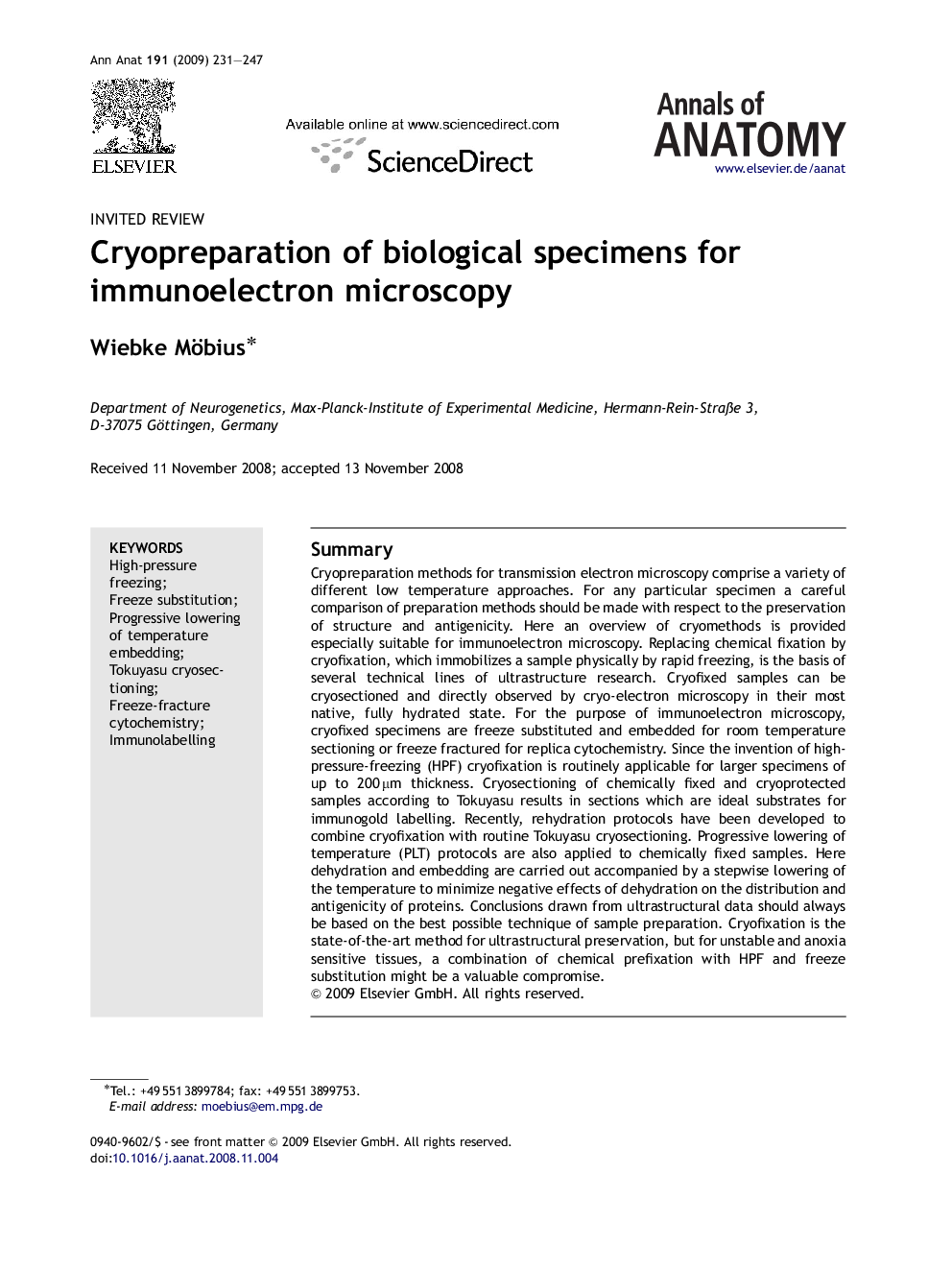| کد مقاله | کد نشریه | سال انتشار | مقاله انگلیسی | نسخه تمام متن |
|---|---|---|---|---|
| 8462434 | 1549033 | 2009 | 17 صفحه PDF | دانلود رایگان |
عنوان انگلیسی مقاله ISI
Cryopreparation of biological specimens for immunoelectron microscopy
دانلود مقاله + سفارش ترجمه
دانلود مقاله ISI انگلیسی
رایگان برای ایرانیان
کلمات کلیدی
موضوعات مرتبط
علوم زیستی و بیوفناوری
بیوشیمی، ژنتیک و زیست شناسی مولکولی
بیولوژی سلول
پیش نمایش صفحه اول مقاله

چکیده انگلیسی
Cryopreparation methods for transmission electron microscopy comprise a variety of different low temperature approaches. For any particular specimen a careful comparison of preparation methods should be made with respect to the preservation of structure and antigenicity. Here an overview of cryomethods is provided especially suitable for immunoelectron microscopy. Replacing chemical fixation by cryofixation, which immobilizes a sample physically by rapid freezing, is the basis of several technical lines of ultrastructure research. Cryofixed samples can be cryosectioned and directly observed by cryo-electron microscopy in their most native, fully hydrated state. For the purpose of immunoelectron microscopy, cryofixed specimens are freeze substituted and embedded for room temperature sectioning or freeze fractured for replica cytochemistry. Since the invention of high-pressure-freezing (HPF) cryofixation is routinely applicable for larger specimens of up to 200 μm thickness. Cryosectioning of chemically fixed and cryoprotected samples according to Tokuyasu results in sections which are ideal substrates for immunogold labelling. Recently, rehydration protocols have been developed to combine cryofixation with routine Tokuyasu cryosectioning. Progressive lowering of temperature (PLT) protocols are also applied to chemically fixed samples. Here dehydration and embedding are carried out accompanied by a stepwise lowering of the temperature to minimize negative effects of dehydration on the distribution and antigenicity of proteins. Conclusions drawn from ultrastructural data should always be based on the best possible technique of sample preparation. Cryofixation is the state-of-the-art method for ultrastructural preservation, but for unstable and anoxia sensitive tissues, a combination of chemical prefixation with HPF and freeze substitution might be a valuable compromise.
ناشر
Database: Elsevier - ScienceDirect (ساینس دایرکت)
Journal: Annals of Anatomy - Anatomischer Anzeiger - Volume 191, Issue 3, 2009, Pages 231-247
Journal: Annals of Anatomy - Anatomischer Anzeiger - Volume 191, Issue 3, 2009, Pages 231-247
نویسندگان
Wiebke Möbius,